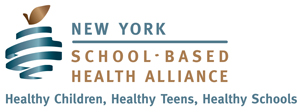School lunch is critical to student health and well-being, especially for low-income students—and ensures that students have nutrition they need throughout the day to learn. Research shows that receiving free or reduced-price school lunches reduces food insecurity, obesity rates, and poor health. In addition, the new school meal nutrition standards are having a positive impact on student food selection and consumption, especially for fruits and vegetables.
QUICK FACTS
- Reimbursable meals must meet federal nutrition standards. National School Lunch Program lunches provide one-third or more of the recommended levels for key nutrients.
- Reimbursable meals must provide no more than 30 percent of calories from fat and less than 10 percent of calories from saturated fat.
- New nutrition standards phased in since the 2012-2013 school year required schools to increase whole grains, fruits, and vegetables served through the National School Lunch Program.
To read more, CLICK HERE.
